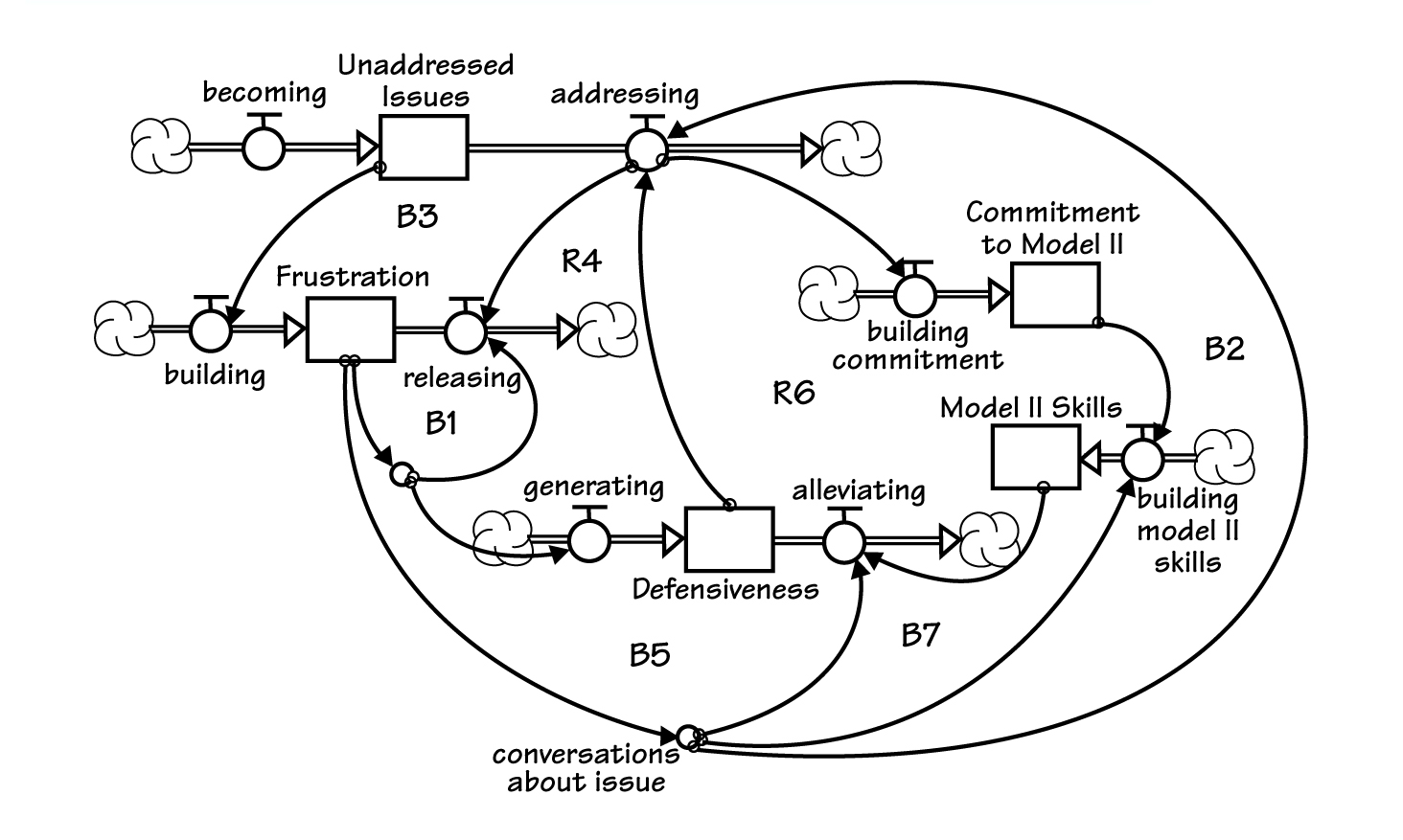The Problem: Unintended Consequences of Venting
While reading the Workout regarding Vault.com, I couldn’t help but picture Peter Finch’s famous scene from the movie Network, as he leans out the window and screams “I’m mad as __, and I’m not going to take it anymore!” Such a cathartic release seems really therapeutic: however, it is often more harmful than helpful.
Anonymous “venting” seems like a great idea. But succumbing to this impulse will likely decrease the probability that any effective change will happen in an organization. Here’s why.
As frustrations build, the natural reaction is to vent, releasing that frustration (B1). This is just a quick release; since the cause of building frustration—unaddressed issues—still remain, the level of frustration rebuilds. Eventually, people will engage in conversations to address the issues, which will lower frustration (B2)—and fewer unaddressed issues reduce the building of frustration (B3).
This would be effective if the previous venting had not generated defensiveness, which hinders stakeholders’ ability to address the issues. It sets in motion an insidious vicious cycle: the higher the frustration, the more venting, and the less likely conversations will result in addressing the issues—and the more frustration (R4)!
The Solution: Model II Skills
The leverage point is building the organization’s capacity to facilitate productive conversations—ones that reduce defensiveness in order to more effectively address issues. Chris Argyris refers to such skills as Model II skills; they are described in very practical terms in Roger Schwarz’s The Skilled Facilitator (Jossey-Bass, 1994).
Comments like “The CTO is a complete idiot” are unactionable; they might be true, they might not—yet there’s no data for anyone in the system to decide what’s true nor how improvements can be made! Such comments only increase defensiveness. Plus, venting anonymously allows the venter to ignore their own responsibility with respect to the issue. Model II skills help people who want change to present their issues in ways that reduce potential defensiveness by doing so in a “mental modeltesting” way. Mental model-testing facilitates collaboration with all stakeholders on resolving issues—and by doing so, the venters may even have their mental models revised.
Organizations embarking on this journey set in motion beneficial feedback loops. First, because defensiveness is alleviated, conversations about issues eventually lead to addressing them, which lowers frustration (B5). Second, a virtuous cycle results because successfully addressing issues will increase an organization’s commitment to building Model II skills (R6).
Learning these skills requires applying them to conversations about difficult issues, which, if successful, reduces the need to have such conversations (B7). Such a loop would impede further building of these skills if not for the fact that more issues enter the unaddressed stock (that nasty inflow will make sure of it). The good news is that future issues will likely be “higher quality” issues. Organizations that learn to address some of the issues described in the Event article will—like moving up Maslow’s hierarchy—be able to focus on issues of more strategic importance. And that’s an issue not to complain about!
—Chris Soderquist
The Leverage in Building Communication Skills

